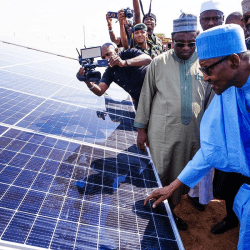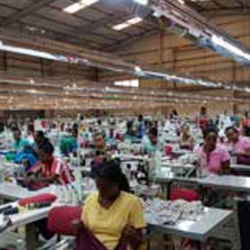🌍 Adigala Wind Farm Project: Ethiopia’s $255M Wind Energy Investment
The Adigala Wind Farm Project in Ethiopia is a $255.48 million investment designed to generate 150 MW of renewable energy. Learn about its impact, challenges, and future prospects.
1. Adigala Wind Farm
The Adigala Wind Farm Project is a groundbreaking renewable energy initiative aimed at harnessing Ethiopia’s strong wind resources. Located in Adigala town, Sitti Zone, Somali Regional State, this $255.48 million project will generate 150 MW of clean energy, contributing to Ethiopia’s green energy transition.
This project is being developed under a Public-Private Partnership (PPP) with a Build-Operate-Transfer (BOT) model, making it an attractive investment opportunity for renewable energy developers worldwide.
2. Location and Geographic Significance
The Adigala Wind Farm is strategically positioned 1 km north of Adigala town, near the borders of Somalia (50 km) and Djibouti (60 km).
Why This Location?
✔ High Wind Potential: The Somali region experiences strong, consistent wind speeds.
✔ Strategic Trade Corridor: Close to Djibouti, a key regional energy hub.
✔ Energy Accessibility: Supports electricity distribution in a remote region with low grid penetration.
This location ensures optimal wind power generation while benefiting local communities with reliable electricity access.
3. Project Scope and Capacity
Key Specifications
- Capacity: 150 MWac
- Land Requirement: 9,500 hectares
- Transmission Infrastructure: New High Voltage (HV) transmission line
- Technology: Modern wind turbines for maximum efficiency
The wind farm will directly contribute to Ethiopia’s clean energy mix, reducing dependence on hydropower and fossil fuels.
4. Investment and Cost Breakdown
The $255.48 million budget covers:
✔ Wind turbine procurement
✔ Infrastructure development
✔ Grid connection and power transmission
✔ Operations & maintenance
Potential funding sources include:
✅ Ethiopian government allocations
✅ Public-Private Partnership (PPP) financing
✅ Foreign investments and development loans
5. Procurement and PPP Structure
The Adigala Wind Farm Project will be developed using a Build-Operate-Transfer (BOT) framework with a Design, Build, Finance, Operate, and Maintain (DBFOM) structure.
Competitive Bidding Process:
- The project will be awarded through a transparent, competitive bidding process.
- The private partner will design, finance, and operate the project before transferring ownership to the Ethiopian government.
This PPP structure ensures cost efficiency, risk-sharing, and sustainable management.
6. Role of Ethiopian Electric Power (EEP)
The Ethiopian Electric Power (EEP) is the contracting authority responsible for the project’s planning, feasibility study, and procurement.
EEP’s Responsibilities:
✔ Conducting feasibility assessments
✔ Managing contract bidding
✔ Overseeing regulatory approvals
✔ Integrating the project into Ethiopia’s national grid
EEP plays a key role in ensuring project success and long-term sustainability.
7. Ethiopia’s Growing Energy Demand
Ethiopia is one of Africa’s fastest-growing economies, with an energy demand increase of 10-15% annually.
Current Energy Mix:
- Hydropower: 90%
- Wind & Solar: 10% (rapidly growing)
By 2030, Ethiopia aims to generate over 5,200 MW from renewable sources, making wind energy projects like Adigala a top priority.
8. Economic and Social Impact
The Adigala Wind Farm will:
✔ Create thousands of jobs during construction and operation
✔ Boost the local economy in the Somali region
✔ Provide stable electricity, enhancing local industries and businesses
The project will stimulate development in the Somali region, improving living standards and economic growth.
9. Environmental Impact and Sustainability
⚡ Zero Carbon Emissions: Replacing fossil fuels with clean wind energy
🌱 Preserves Natural Resources: Unlike hydropower, wind energy doesn’t require water
🌍 Supports Ethiopia’s Green Economy Strategy
Wind energy is a sustainable, low-impact solution for Ethiopia’s growing electricity demand.
10. Potential Challenges and Risks
⚠ Land acquisition issues due to community concerns
⚠ Environmental regulations and approvals
⚠ High initial investment costs
By addressing these risks through stakeholder engagement and sustainable planning, the project can be successfully implemented.
11. Current Status and Future Timeline
📌 Feasibility Study: Ongoing (conducted by EEP)
📌 Bidding Stage: Expected 2025
📌 Construction Start: Estimated 2026-2028
📌 Operational Phase: By 2030
EEP is currently finalizing feasibility studies before launching competitive bidding for project development.
12. Foreign Investment Opportunities
Ethiopia is actively seeking foreign investors for renewable energy projects.
Investment Areas:
✔ Wind turbine manufacturing
✔ Project financing & infrastructure development
✔ Energy distribution and grid expansion
The government offers tax incentives and guarantees power purchase agreements for international investors.
13. Ethiopia’s Wind Energy Potential
Compared to other African countries, Ethiopia has vast untapped wind resources.
How Adigala Compares Globally:
🌍 Kenya’s Lake Turkana Wind Project – 310 MW
🌍 Morocco’s Tarfaya Wind Farm – 300 MW
🌍 Ethiopia’s Ashegoda Wind Farm – 120 MW
Adigala will significantly boost Ethiopia’s wind energy production.

1. What is the cost of the Adigala Wind Farm Project?
💰 The project is estimated at $255.48 million.
2. How much electricity will the wind farm generate?
⚡ It will generate 150 MW of clean energy.
3. Who is leading the project?
🏢 The project is overseen by Ethiopian Electric Power (EEP).
4. When will the project be completed?
🛠 The feasibility study is ongoing, and the project is expected to be operational by 2030.
5. Can foreign companies invest in this project?
🌍 Yes, foreign investors can participate through competitive bidding.






